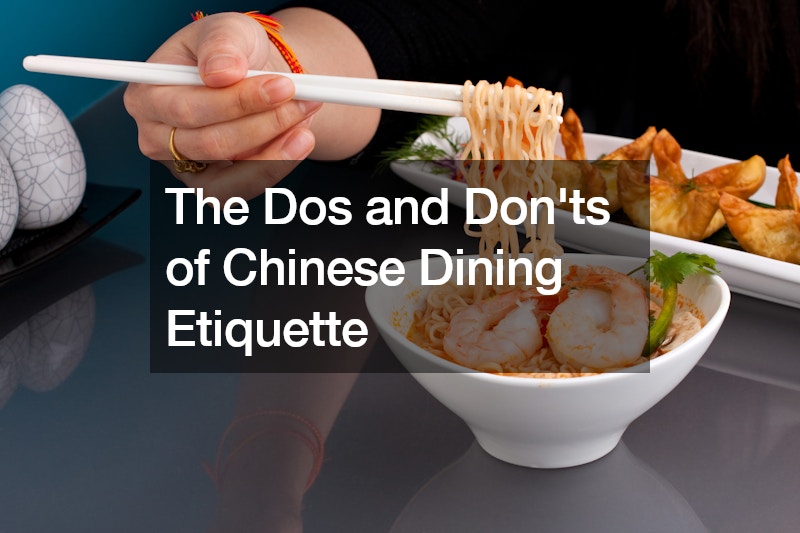
Chinese cuisine is renowned worldwide for its diverse flavors, rich history, and unique dining customs. From the bustling streets of Chinatown to elegant banquet halls, experiencing authentic Chinese dining etiquette can be both fascinating and rewarding. Whether you’re dining at a Chinese restaurant or attending a family gathering, understanding the dos and don’ts of Chinese dining etiquette is essential for a seamless and respectful dining experience.
Tea
Tea holds a special place in Chinese culture, symbolizing hospitality and friendship. When it comes to tea etiquette, there are several important customs to observe.
Firstly, never leave a teacup empty; it’s considered impolite. Instead, fill it to about 78% full. When receiving or serving tea, use both hands as a gesture of respect. And don’t forget the silent thank-you gesture, known as the finger tap, to show appreciation to the person pouring the tea.
Similarly, the way you handle the teapot and cups is observed. Ensure that the teapot faces outward, not toward the guests, as it is considered impolite. When serving tea, hold the cup with both hands, especially when serving elders or guests, as it demonstrates respect. Tea selection is also important. Different teas complement various dishes, so it’s worth exploring the options and understanding their flavors and pairings.
Dim Sum
Dim sum, meaning “to touch your heart” in Chinese, is a beloved culinary tradition consisting of bite-sized portions of various dishes, from steamed dumplings to deep-fried buns. When enjoying dim sum, remember to eat one piece at a time and avoid reaching across the table for dishes. It’s customary to serve elders first and offer food to others before helping yourself. And don’t forget to share the last piece–it’s a gesture of generosity and consideration.
Respecting the order of serving and eating dim sum is equally important. Start with lighter dishes and gradually move on to heavier or richer ones. Avoid rushing through the meal because dim sum is meant to be savored and enjoyed leisurely.
Chopsticks
Using chopsticks can be an art form in itself, and practicing proper chopstick etiquette is key to a respectful dining experience. When dining in more formal settings, you may encounter two pairs of chopsticks–personal and communal. Use your personal chopsticks for transferring food from your bowl to your mouth and the communal chopsticks for serving shared dishes. Avoid pointing with chopsticks, crossing them on your bowl, or resting them vertically since these actions are considered rude or taboo in Chinese culture.
Moreover, handling chopsticks with finesse and respect is essential. Avoid waving or playing with them, as it can be distracting and disrespectful to fellow diners. Instead, use chopsticks gracefully and with purpose, focusing on enjoying your meal and engaging in meaningful conversation.
Respect for Elders
Respect for elders is deeply ingrained in Chinese culture and extends to the dining table. Always serve elders first and defer to their preferences when choosing dishes or pouring tea. During mealtime conversations, avoid interrupting or speaking loudly, as it’s considered disrespectful. Instead, listen attentively and engage with others in a courteous manner.
It’s also important to show deference in your actions and words. Contentious topics or arguments during the meal can lead to discomfort or tension. Instead, focus on building harmony and camaraderie through positive and respectful interactions. By honoring your elders at the dining table, you uphold cherished traditions and foster a sense of unity and respect within the family or community.
Bill Etiquette
In Chinese dining culture, settling the bill can be a gesture of hospitality and goodwill. It’s common to see diners playfully “fighting” over the bill, but in reality, it’s a sign of generosity and camaraderie. If you’re dining with others, offering to pay or contributing to the bill is a thoughtful gesture appreciated by many.
Additionally, handling the bill with grace and respect is important. Avoid arguing over who should pay or insisting on covering the entire bill yourself. Instead, engage in friendly banter and genuine gestures of generosity, such as offering to split the bill or treating others to a meal on another occasion.
Final Thoughts
Chinese dining etiquette is steeped in tradition and symbolism, reflecting centuries of cultural heritage. By observing these dos and don’ts, you not only show respect for the customs and traditions but also enhance your dining experience. Whether you’re savoring delicate dim sum or indulging in savory Cantonese dishes, embracing Chinese dining etiquette adds depth and meaning to every meal.
So the next time you find yourself at a Chinese restaurant or gathering, remember these dos and don’ts to ensure a memorable and respectful dining experience.
.


